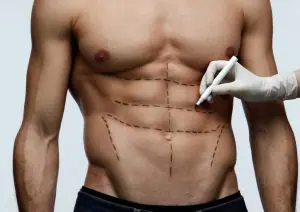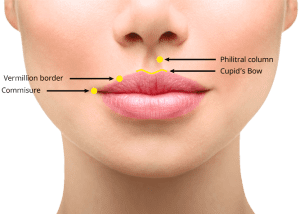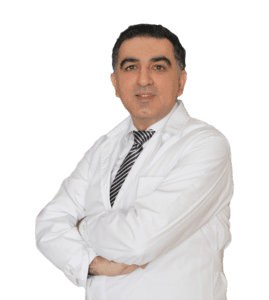Hair Transplant in Iran; All You Need to Know
Hair loss has different causes and also different treatments. Meanwhile, severe or hereditary hair loss that also leads to baldness has only one treatment called hair transplant. Fortunately, this method has outstanding, long-lasting, and natural results. Even if you have a weak hair bank or the extent of the baldness of your head is large, there is no need to worry. With a reasonable cost, you can have a beautiful and natural hair transplant in Iran. A hair transplant is a cosmetic procedure that involves the transfer of hair follicles from an area on the head or body to the front and middle parts of the individual’s head. The part from which the follicles are removed is called the “hair bank or the donor area,” and the hairless area of the head where the follicles are relocated is called the “recipient area.”
Various hair transplant procedures are performed in Iran, and Iran is recognized as a prominent center for hair transplants. The high number of hair transplant procedures performed in Iran shows the country’s recognition and popularity regarding this procedure. Iran is a country that offers numerous advantages. From highly trained and knowledgeable doctors to its highly modern medical facilities and affordability, Iran Supplies a wide range of opportunities to have a smooth and successful hair transplant procedure resulting in the best outcomes. In case you are considering hair transplant in Iran and have a keen interest in learning more about this procedure, keep on uncovering the information provided by Avamedi as we delve extensively into the realm of hair transplant in Iran in the following passages.
What is Hair Transplant?
One of the most critical options in increasing the attractiveness and beauty of people is to have thick and well-groomed hair. But sometimes, different reasons may cause hair loss, which in some cases leads to a significant reduction of hair or baldness. In most of these cases, the only solution is a hair transplant. Hair transplant is a method that solves many problems and complications regarding hair loss and thinning hair. A hair transplant causes hair follicles that are damaged or weakened to be repaired and grow again. A hair transplant consists of three stages: removing hair follicular units (hair graft) from the donor site (hair bank), preparing the grafts, and the final stage is graft implantation. Natural hair on the surface of the applicant’s body, skin, or head will be used to perform the hair transplant procedure. According to the aesthetic doctor, the desired and suitable areas of hair follicle donors are the back of the head between the two ears and the part below the neck. This area is more proper in terms of thickness and length due to its similarity to the hair in the middle of the head. In exceptional cases, if necessary, hair from parts of the body, such as the chest, is also used for people. In general, there are two methods for removing hair grafts from the back of the individual’s head, which are called the surgical method and the non-surgical method.
Avamdi offers other services in the field of hair transplantation such as Eyebrow Transplant in Iran And Hair Transplant in Iran.
Why is Iran a Good Destination for Hair Transplant?
Wide-ranging reasons make Iran an excellent destination to consider for hair transplants. Hair transplant in Iran is a sought-after procedure that is performed in competent hair transplant clinics. The following factors make Iran the foremost destination for hair transplants:
- Excellent medical facilities: The numerous highly modern and expert medical facilities in Iran are one of the most excellent reasons that led to the selection of Iran as the top destination for hair transplants. These developed and advanced hair transplant clinics are very well known. These clinics provide the best care and services for individuals seeking hair transplants in Iran.
- Masterful and adept aesthetic doctors and hair transplant technicians: Skilled aesthetic doctors in Iran have trained for years and are recognized worldwide for their experience and level of expertise. Many people consider having a hair transplant in Iran as they have heard of the expert aesthetic doctors in Iran. Additionally, hair transplant technicians for the hair transplant in Iran are highly skilled and have successfully carried out numerous procedures, yielding outstanding results.
- Cost-benefit ratio: Another determining factor is the economic price of hair transplant procedures in Iran. Individuals can comfortably receive the best services at a lower price in comparison with other countries, which is a great advantage.
- Medical tourism infrastructure: The developed medical tourism infrastructure is another compelling reason that makes Iran a favorable destination for hair transplants. Online healthcare providers in Iran can help and assist you by carefully evaluating your information and giving you consultation to have a better understanding of the whole procedure and other elements associated with it. To receive a professional and customized consultation regarding hair transplant in Iran, kindly contact Avamedi Health Group. Our dedicated team will provide comprehensive support and guidance, ensuring your needs are met at every step of the process.
- Cultural tourism realm: Iran is a country that is very rich in the historical aspect. This dimension has created opportunities for many people from all around the world to explore the country’s great sites as well as try the country’s most delicious cuisines and enjoy the country’s rich culture while traveling to Iran for a hair transplant procedure.
Hair Transplant in Shiraz
Hair transplants in Shiraz have made significant progress in recent years. Hair transplant in Shiraz is offered by SUT, FUT, FUE, BHT, and FIT methods at reasonable prices. However, The two main hair transplant methods in Shiraz include: FUT Hair transplant and FUE Hair transplant techniques.
- FUT hair transplant: In the FUT method of hair transplantation in Shiraz, a strip cut is removed from the donor area that contains suitable hair follicles. In this technique, no advanced devices or equipment are used, and all the steps are done entirely manually. The harvested follicles are examined under a microscope, and the best ones are selected for implantation. Finally, the follicles are transplanted into the recipient area, and the head is bandaged for the recovery period and healing of the scars. The advantages of the FUT hair transplant include a higher speed of performing the procedure than other methods, the lower cost of this technique compared to other methods, reducing the possibility of errors in the harvesting of grafts. Also, the disadvantages of FUT hair transplant are the invasiveness of the FUT hair transplant method, making a further incision to harvest the follicles, the need for more care for the scars healing, longer recovery period than other methods, not doing heavy activity for at least two months following the procedure.
- FUE hair transplant: This method of hair transplantation is also known as the FIT technique, in which hair follicles are removed individually from the head and the hair bank. To do this, a device called a punch is used to harvest suitable follicles so that they can be prepared for transplantation after performing the necessary examinations on each one. The advantages of FUE hair transplant involve a shorter recovery period, no scars, and the possibility of harvesting hair follicles from diverse areas. Furthermore, the disadvantages of the FUE hair transplant entail the low speed of surgery, the need for more sessions, the need for higher accuracy, and the aesthetic doctor’s skills and experiences.
Hair Transplant in Mashhad
Having full, healthy and shiny hair is one of the dreams of all people. Everyone likes to have healthy hair and a beautiful-looking appearance. Hair loss can happen due to various reasons and people suffer from thin hair or baldness. This issue, which is more prevalent among men these days, can happen as a result of various factors. Factors include nutrition, lifestyle, lack of exercise, lack of sleep, use of chemicals such as hair dyes and bad shampoos, stress, etc. Fortunately, today, with science and technology development, it is possible to treat hair loss pro, cure attractive and charming hair, and bask in its beauty. One of the best methods, which is very well known and popular, is a hair transplant in Mashhad.
To have a hair transplant procedure, the latest methods for hair transplantation should be used. One of the best methods of hair transplantation, which is known as one of the most common methods in America and Europe, is the SUT hair transplant. This method is also performed as the newest method of hair transplant in Mashhad. With this method, in just two to three sessions, you have the potential to achieve 14,000 hairs on your head and attain the desired outcome.
Through the procedure of a hair transplant in Mashhad, you can restore a considerable percentage (roughly 70 to 90%) of the hair you have lost by seeking treatment at a well-established hair transplant center in Mashhad, which is deemed a tremendous achievement in its regard.
Hair transplants, like other cosmetic surgeries, should be performed by a skilled and experienced aesthetic doctor so that the ideal results can be achieved.
Natural hair transplant in Mashhad is known as a surgical procedure in which healthy follicles are removed from the hair bank (a part of the head with high hair density) and donated to the recipient area. Hair transplant in Mashhad can be considered a completely permanent and long-lasting method, which is suitable for treating hair loss in people who suffer from this problem for various reasons. Choosing the best hair transplant center in Mashhad is crucial in the final result of the hair transplant.
There are many methods to perform hair transplantation. The cost of hair transplantation in Mashhad varies according to the method used, and each of them can be suitable based on each individual’s condition. In fact, the suitability of the best hair transplant method in Mashhad for each person depends on the specialist doctor and the necessary examinations performed in the pre-operative consultation session.
The nature of all methods is the same, and the only difference is in the method of harvesting grafts and suitable follicles and also their implantation in the recipient area.
Again, the two of the most common methods of hair transplant in Mashhad are the FIT and the FUT methods.
In the FIT or FUE hair transplant method, a very small punch is used to remove hair follicles from the dense area (hair bank) in such a way that small circular incisions are made on the donor area, and hair strands are removed from that area. This method is mostly used for individuals with minimal hair loss.
In the FUT method, or strip harvesting for hair transplantation, a narrow and thin strip is removed from the donor part of the scalp, and suitable follicles for implantation are examined under a microscope and then harvested.
Hair Transplant in Tehran
Hair transplants in Tehran are highly preferred and widely sought after and have significantly developed in recent years. Tehran is the capital and the largest city of Iran. Tehran holds numerous merits and has made significant strides in recent times. Boasting modern hair transplant clinics and highly proficient doctors, Tehran provides unparalleled services for individuals planning to undergo a hair transplant.
Choosing the best hair transplant doctor in Tehran is the first step of the hair transplant procedure. Due to the high sensitivity of this process, the hair transplant procedure should be performed in a reputable clinic by a specialist aesthetic doctor.
The best hair transplant doctor in Tehran has the following features:
- Adequate proficiency and expertise: The best hair transplant doctor in Tehran is a person who has gained a lot of experience in performing hair transplant surgeries. Experienced doctors have acquired all the necessary skills during years of experience, and if they face any problem, they can easily solve it.
- Using new hair transplant techniques: In addition to having experience and skills, the best hair transplant doctor in Tehran is the one who can keep his knowledge up to date and strive to learn new methods of hair transplant each year. By using new techniques, such a doctor reduces the error rate of hair transplant procedures and reduces the possibility of adverse side effects.
Also, regarding the ideal age for receiving a hair transplant in Iran, the specialist aesthetic doctor must check the individual’s suitability for having a hair transplant before anything. Factors that affect the time of hair transplantation include:
- The individual’s age.
- The amount of hair loss and baldness.
- The level of the individual’s expectations.
- The number of strands in the donor area.
The best age for hair transplant in Iran is when the period of hair loss has ended, which is usually determined by the age of 25. But of course, as mentioned, hair loss conditions are different for each person.
As for methods of hair transplant in Tehran, there are two methods: FIT and FUT hair transplant. The only difference between FIT and FUT method is the harvesting and grafting.
The best method for hair transplant is the one that is performed with higher speed and less damage to the grafts. Factors like no bleeding, no remaining scars, and no damage to side grafts are the characteristics of a suitable and advanced method of hair transplant in Tehran.
Hair Transplant Cost in Iran
The cost of a hair transplant in Iran ranges between 700 USD to 1,500 USD. Multiple reasons can affect the cost of a hair transplant in Iran. These factors include:
- The aesthetic doctor’s experience: The expertise of an experienced aesthetic doctor who has a better diagnosis than an amateur doctor will definitely lead to a more successful hair transplant and a more satisfactory result. Obviously, the cost of having a hair transplant performed by an expert aesthetic doctor is much higher than that performed by a non-skillful doctor.
- The cost of the hair transplant clinic: The equipment and tools used in hair transplant procedures are diverse. In addition, the modernity of hair transplant devices is also different in each clinic. Naturally, the services provided by different clinics are not the same, and all these factors affect the price of a hair transplant in Iran.
- The extent of baldness: The number of hair grafts that can be implanted is different for each person. The cost of a hair transplant for thin hair, which actually experienced more hair loss, is lower than for thick hair, which requires more hair grafts to be implanted. Therefore, the cost of a hair transplant in Iran varies significantly according to the degree of baldness in an individual.
- The technique of the hair transplant: Removing and implanting hair grafts are performed in various ways. In some of these methods, the grafts are removed automatically, and in other methods, it is done manually. The sensitivity of hair transplant and the accuracy required in each method have a significant impact on the cost of hair transplant in Iran, which is why the cost of hair transplant is variable based on the transplant method.
Hair Transplant Cost in Tehran
The price range for hair transplant procedures in Tehran starts at 700 USD and goes up to 1,500 USD. Many factors affect the cost of hair transplant in Tehran, among which the following can be mentioned:
- The cost of the doctor’s salary: The greater the expertise and skill of a doctor in the field of hair transplant in Tehran, the better and ideal the results will be. For this reason, an experienced and skilled aesthetic doctor has a higher salary.
- Clinic fee: Diverse clinics can charge different fees according to the facilities and services they provide to individuals. For example, the fee of a clinic that uses advanced and up-to-date equipment and devices for hair transplant in Tehran is higher and has a higher price for hair transplantation.
- Hair density or baldness: The higher the density of the requested hair for transplantation, the longer it takes to perform the procedure because more grafts are needed to be harvested, and the implantation takes longer. The cost of high density hair transplant varies and is determined by the aesthetic doctor.
- The technique used: Different techniques are used to perform hair transplant procedures. These techniques are determined based on the type of graft harvesting, some of which are done manually, and others are performed entirely automated. According to the chosen method for harvesting grafts and planting them, there are also different prices for hair transplants in Tehran.
- Geographical location of the hair transplant clinic: The geographic location of the hair transplant clinic affects its cost. A clinic located in the best part of the city will definitely cost more.
- Additional costs of hair transplant in Tehran: Hair transplant costs include care instruments after hair transplant, the cost of preimplantation tests, medicines prescribed by the doctor, special shampoo, etc.
Hair Transplant Cost in Shiraz
The cost of the hair transplant in Shiraz starts from 600 USD to 1,000 USD. A multitude of factors influences the cost of a hair transplant in Shiraz, so the cost of a hair transplant in Shiraz may increase or decrease. Below is a more detailed explanation of each of these factors:
- The doctor’s salary: Each doctor receives a different salary for a hair transplant procedure based on his expertise and experience. Certainly, a doctor with high experience and skill will receive a higher salary.
- Clinic fee: Various clinics may have differing fee structures based on the range of facilities and services offered to people.
- Hair density (baldness): As the density of the desired hair for transplantation increases, the procedure duration extends due to the need for harvesting more grafts and the longer implantation process.
- Planting technique: Choosing the best type of hair transplant method for graft removal depends on the aesthetic doctor’s diagnosis. The cost of various hair transplant methods also differs.
Please note that, choosing the cheapest clinics for hair transplant can have irreparable consequences, so before choosing a hair transplant clinic, don’t use its low cost as your selection criterion. The best thing is to choose the best hair transplant clinic with a fair cost.
But if you are looking for a lower price to have a hair transplant procedure and you intend to achieve an ideal result, you can have FUT hair transplantation. The cost of the FUT method is lower due to the high speed of harvesting the grafts and also spending less time for surgery.
Types of Hair Transplant
Hair transplant methods are generally divided into the following two categories; these methods are the basis for other methods:
- Follicular Unit Transplantation (FUT)
- Follicular unit extraction method (FUE or FIT)
These methods will be explained in depth in the following lines.
- Follicular Unit Transplantation (FUT): This method is one of the old methods of hair transplant. In the FUT method, which is also known as the strip harvesting method, the hair transplant technician goes through the following steps: The technician removes a part of the scalp using a scalpel. This skin is generally removed from the back of the head. The size of these strips is approximately between 15 and 25 cm. After removing the skin, this area is sutured. The hair transplant technician divides this part of the skin into smaller parts. These small parts are called grafts. Some of these grafts can contain only one hair follicle. Then, using a needle or a blade, the hair transplant technician makes tiny holes in the skin in the desired areas for implantation. After that, the hair transplant technician places the hair grafts into these holes. Finally, the surgical area may be covered with a bandage. The number of grafts obtained in this method depends on the following factors:
- The individual hair type
- The extent of the implantation area
- Hair quality, including hair thickness
- Hair Color
This method leaves a scar behind and has a more extended recovery period.
- Follicular unit extraction method (FUE or FIT): In the FUE or FIT method or follicular unit extraction, hair follicle extraction and implantation is in a single and granular form. Unlike the FUT method, which leaves a thin strip of scar, this method leaves several minimal circular scars. During the FIT procedure, the hair transplant technician goes through the following steps: First, the back of the head is shaved. Then, the hair transplant technician extracts the follicles from the scalp one by one. After that, the technician makes tiny holes in the scalp in the area where the implantation is to be performed, and then he implants the grafts in these tiny holes. Finally, the surgical site is covered with a bandage or gauze. This method is currently the best technique for hair transplant because it is less invasive.
Types of Hair Transplant in Iran
There are varying types of hair transplants in Iran, each of which has its specific characteristics and is suitable for different people. These types of hair transplants in Iran are discussed in the following lines.
FUT Hair Transplant in Iran
FUT hair transplant has gained significant popularity and recognition in Iran. In FUT hair transplant in Iran, which is performed under local anesthesia, a narrow strip is removed from the hair follicles at the back of the head, and the implantation is performed under the supervision and performance of a specialist doctor, technicians, and other hair transplant team. In hair transplants in Iran, the extracted grafts will be transferred to the desired area.
In general, the method of FUT hair transplant in Iran is a standard method for hair transplantation, which can remove and implant the largest volume of hair during surgery. In most cases, more than 90% of the implanted grafts will grow. Therefore, perfect results will be achieved by having a hair transplant in Iran.
Hair transplantation using the Follicular Unit Transplantation (FUT) method is a very effective solution for those suffering from hair loss or thinning hair.
The FUT hair transplant in Iran has several advantages over other techniques. This allows a larger amount of grafts to be transplanted in one session and is ideal for people with extensive hair loss.
Also, the precision involved in grafting each follicle ensures that the new hair growth blends seamlessly with the existing hair. Additionally, since FUT uses your natural hair follicles, there is no risk of blowback or allergic reactions.
Using FUT hair transplant in Iran is an effective solution for people who are looking for long-term and aesthetic results.
FUE Hair Transplant in Iran
Hair transplant in Iran using the follicular unit extraction (FUE) method is a procedure that involves removing healthy hair follicles from the donor area and transplanting the hair follicles to bald areas. The procedure of FUE hair transplant in Iran begins by administering local anesthesia. Then, the preferred number of hair follicles is extracted one by one from the donor area. The last step involves implanting the grafts. Afterward, the bald area is numbed, and numerous tiny incisions are created using specialized micro-punches.
The FUE hair transplant in Iran has many benefits. The FUE hair transplant in Iran is a minimally invasive procedure because no strip is removed from the head. Also, there are fewer wounds in the FUE hair transplant procedure. Even though the FUE method causes countless tiny incisions, small scars are hardly visible and are easily hidden under the hair. Follicular unit extraction, or the (FUE) hair transplant, can extract donor hair from any part of the body. It is useful for people who have less donor hair on the scalp. Also, body hair can be removed and implanted in the required area.
Additionally, the FUE hair transplant in Iran has less recovery time.
DHI Hair Transplant in Iran
DHI hair transplant in Iran, or direct body-to-head hair transplant, is a new method of hair transplant. DHI hair transplantation is based on FUE. In FUE, hair follicles are removed separately from different areas of the hair bank and then implanted in the desired area.
In DHI hair transplant in Iran, at the same time that the implantation holes are made in the desired area, some follicles are also removed from the hair bank area. The reason why DHI hair transplant is also called direct hair implantation is that immediately after harvesting, the hair follicles are quickly inserted into the cavities created in the implantation area.
In DHI hair transplant in Iran, grafts are harvested using a micro punch. The harvested grafts are placed in a rich solution containing nutrients. In this way, the grafts remain healthy in the time interval between harvesting and implantation. Grafts in this method are planted using a special tool called a Choi Pen. The main difference between DHI and FUE hair transplantation is the use of a Choi pen, and for this reason, some people call the DHI method the Choi method.
A Choi pen is a hollow needle of different dimensions that is connected to a repository through a tube. Tiny holes are made in the recipient area using a pen, and the harvested follicles are placed inside these holes. The Choi needle is placed on the scalp at an angle of 40-45 degrees, and then small incisions are made. In the next step, the follicles are placed in the holes.
Robotic Hair Transplant in Iran
In the Robotic hair transplant in Iran, the doctor adjusts certain parameters such as punch depth and angle using a manual handpiece or a computer. In creating the robotic recipient site, the doctor plans the total number of areas, the density for specific areas, the angle of the recipient site, the direction of the needle, and the depth of the site. A technician is used to direct the robot to move to specific areas of the individual’s scalp. Once it is done, the creation of the recipient site starts automatically unless the doctor invalidates the information. There are other crucial doctor-dependent steps in FIT robotic hair transplantation, especially regarding recipient planning and procedure design.
Other steps, such as microscopic sorting, trimming of harvested follicle grafts, and graft placement, are often performed by trained staff but require physician supervision.
How is Hair Transplant Performed in Iran?
The two prominent and well-known methods of hair transplant in Iran include FUE or FIT (Follicular unit extraction) and FUT (Follicular Unit Transplantation). Depending on the number of hair implants, a hair transplant in Iran may take six to eight hours in one day and sometimes two days. A hair transplant is performed under local anesthesia. In the FUT method, a narrow strip of the skin of the hair bank area at the back of the head, 1-2 cm wide and 15-25 cm long, is removed. Then, the hair follicles are carefully extracted from this strip and prepared. Prepared follicles are implanted in the scalp in the implantation area. Then, the place where this strip is removed is sutured on the scalp. In the FUE method, using special devices, hair follicles are extracted individually and separately from the hair bank area and placed in the implant area. In this method, there is no need to remove a narrow strip or suture the skin; in addition, the scope of the hair bank is broader in FUE hair transplantation. In the FUE hair transplant, in order to harvest the follicles, a tiny hole is first made in the donor site with a sharp punch, and then, in the next step, the follicles are separated from the surrounding soft tissue using a slow punch device. Using a slower punch at this stage prevents damage to the soft tissue around the follicles.
Hair Transplant Recovery: What to Expect?
Many hair transplant applicants are worried about the hair transplant recovery process and do not have enough information about it. The healing process after a hair transplant in Iran is different according to each body condition. In general, it takes 7 to 14 days for the swelling, bruises, and wounds in the implanted area to subside. Of course, if the person follows the instructions of the hair transplant recovery period carefully, the recovery period will be shorter. Sometimes, it only takes 7 to 10 days for the wounds to disappear; you need to take good care of the implanted grafts after the implantation. To achieve the maximum desirable result from hair transplantation, you should have information about the recovery period and know its tips.
Hair Transplant for Women
Today, women have severe hair loss problems due to various reasons, and many treatment methods have been defined to address this issue. Hair transplantation in women eliminates the consequences of androgenetic alopecia and is the only permanent solution to female pattern baldness. Pattern baldness is mainly seen as a male problem. Still, women can also suffer from hereditary hair loss, which often manifests itself in a receding hairline, temple balding, and thinning hair on the crown of the head in women. Appears. Among the reasons that cause hair loss in women are genetics, stress, menopause, and other issues. Women can also have a hair transplant in Iran. The first stage of hair transplant for women includes preparing the individual for hair transplantation and creating a comfortable and calm environment for performing the procedure. In the second stage, the area to be transplanted is numbed by a local anesthetic. The next step in hair transplantation for women involves the harvesting of hair follicles from the donor area, which provides the required follicular units using either strip extraction or FUE methods. These follicular units are then carefully implanted in the required area using surgical techniques. It’s important to note that if the extracted hair follicles are implanted too much in one area, they will have an inappropriate and compact appearance, and it is essential to implant these follicles in a designed pattern in the desired area to achieve the best results.
Hair Transplant for Women Cost
The cost of a hair transplant for women differs in various countries. For example, the cost of a hair transplant for women in Turkey falls within the 1,500 USD to 3,000 USD range; in Canada, FUE hair restoration pricing starts from 5,000 USD, and in Iran, the cost of a hair transplant procedure for women is the same for men. The cost falls within the range of 700 USD to 1,500 USD. The cost of a hair transplant for women depends on various factors. The most crucial factor in determining the cost of a hair transplant for women is the hair transplant clinic. Other factors affecting the cost of a hair transplant for women include:
- The surgeon’s salary
- The geographical location of the hair transplant clinic
- The number of needed grafts
- The technique being used
- The hair loss degree of the individual
- Side costs relating to the procedure of the hair transplant
Hair Transplant for Women in Iran
As mentioned, hair loss is a common problem among women that can have many causes, including genetics, hormonal changes, stress, and illness. Hair transplant for women in Iran is a surgical procedure that can help women with hair loss to regrow their hair. There are two main methods of hair transplant for women in Iran:
FUT hair transplant: In this procedure, a strip of scalp with hair follicles is removed and transplanted in the bald area.
FUE Hair Transplant: In this method, individual hair follicles are removed from the scalp and transplanted into the bald area.
- FUT hair transplant: In FUT hair transplant, a strip of scalp with hair follicles is removed. This strip is usually removed from the back of the head, as this area of the scalp usually has a higher density of hair. Then, the removed strip is cut individually, and the hair follicles are separated. These hair follicles are then transplanted into the bald area. FUT hair transplant is a relatively quick and easy procedure. This procedure is usually performed in one session and does not require hospitalization.
- FUE hair transplant: In FUE hair transplant, hair follicles are removed individually from the scalp. This is done using a special device that removes the hair follicles safely and without damage. Then, these hair follicles are transplanted into the bald area. FUE hair transplant is a relatively new method. This method has fewer side effects than FUT hair transplant, and more natural results are obtained.
Female Hair Transplant Success Rate
Today women can also have a hair transplant procedure. The success rate of the procedure of hair trasnplant for women relies on some factors. Factors such as the root cause of hair loss, the surgeon’s experience and level of expertise, the technique being used in the hair transplant procedure, and the scale of hair loss.
Generally, female hair transplants yield positive results when they are performed by skilled and proficient aesthetic doctors, and modern technology is used in the process of the procedure.
Two primary techniques are utilized for female hair transplant: the FUT hair transplant and the FUE hair transplant.
Choosing a qualified and professional aesthetic doctor for a woman’s hair transplant is one of the most crucial factors in obtaining natural-looking and successful results. Also, you should follow the recommended and prescribed postoperative care to achieve effective and long-lasting results of a female hair transplant.
Hair Transplant Iran vs Turkey
Iran and Turkey are both attractive places for individuals seeking medical care abroad. Hair transplant procedures in Iran and Turkey are very popular. Hair transplant in Iran and Turkey is performed with specific methods. In fact, both countries use standard and global techniques. The facilities available in Iran are no different from Turkey, and you can experience the same quality with much lower costs in Iran. Hair transplantation has been very popular since the early days, but with the techniques used today, it has become the top trend in the world and the Middle East. There are some factors to consider when comparing hair transplants in Iran and hair transplants in Turkey. For example, both countries offer hair transplant procedures at affordable prices. However, the cost of a hair transplant in Iran is much lower than in Turkey, as the cost of a hair transplant in Iran starts from 700 USD to 1,500 USD, and the cost of a hair transplant in Turkey ranges from 1,200 USD to 3,000 USD. As for the quality of care and surgeons’ experience in Iran and Turkey, you can receive the best services in both countries. Iranian doctors and surgeons are very well known all around the world, and clinics in Turkey are equipped with the latest technologies.
Overall, you should search and consult with the best doctors and clinics in Iran and Turkey and then decide based on your personal choices.
Conclusion
In conclusion, Iran is acknowledged as the top destination for hair transplants, offering first-rate medical facilities, prominent aesthetic doctors and technicians, a favorable cost-benefit ratio, and a modernized medical tourism infrastructure. Hair transplant in Iran, such as Follicular Unit Transplantation (FUT) and Follicular Unit Extraction (FUE), provide natural and long-lasting results. The cost of a hair transplant in Iran varies according to factors such as the doctor’s experience, hair transplant clinic facilities, the extent of baldness, and the particular technique used. As a whole, the FUE method is considered less invasive and is now the preferred technique for hair transplants. Techniques of hair transplant in Iran, such as FUE and FUT, are performed with local anesthesia and can take several hours to carry out. FUT involves removing a strip of skin from the donor area and extracting hair follicles from it, while FUE involves individually extracting hair follicles from the donor area. Typically, the hair transplant recovery period takes 7 to 14 days, during which swelling, bruises, and wounds in the implanted area subside. Also, women can undergo a hair transplant in Iran to address hair loss caused by various factors. The procedure involves:
- Numbing the area.
- Harvesting hair follicles from the donor area.
- Implanting them in the targeted area, following a determined pattern for ultimate results.
If you would like to learn more about a hair transplant in Iran, you can contact Avamedi for a free consultation and receive further guidance.
Source:betterhealth
















